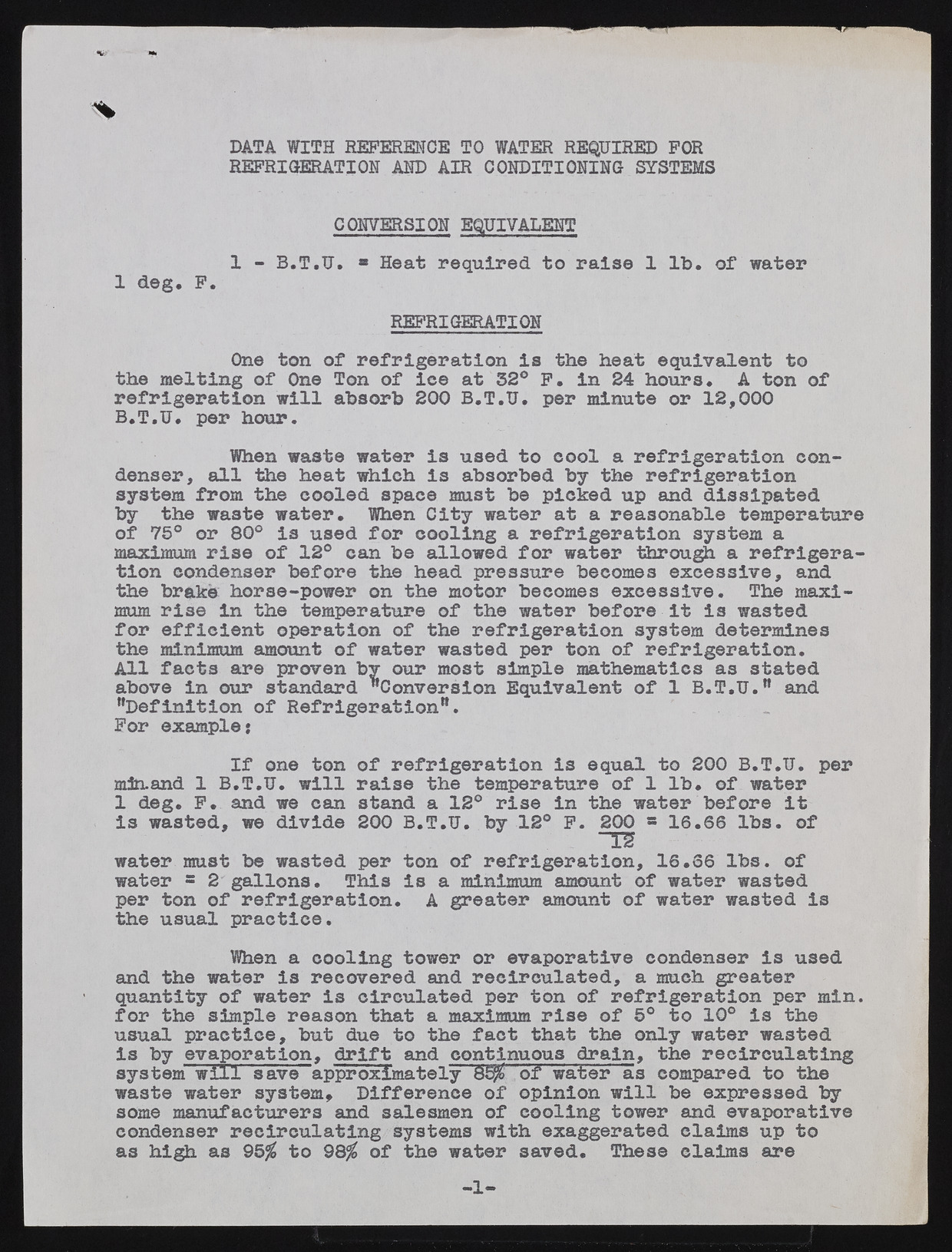Copyright & Fair-use Agreement
UNLV Special Collections provides copies of materials to facilitate private study, scholarship, or research. Material not in the public domain may be used according to fair use of copyrighted materials as defined by copyright law. Please cite us.
Please note that UNLV may not own the copyright to these materials and cannot provide permission to publish or distribute materials when UNLV is not the copyright holder. The user is solely responsible for determining the copyright status of materials and obtaining permission to use material from the copyright holder and for determining whether any permissions relating to any other rights are necessary for the intended use, and for obtaining all required permissions beyond that allowed by fair use.
Read more about our reproduction and use policy.
I agree.Information
Digital ID
Permalink
Details
More Info
Rights
Digital Provenance
Publisher
Transcription
% DATA WITH REFERENCE TO WATER REQUIRED FOR REFRIGERATION AND AIR CONDITIONING SYSTEMS CONVERSION EQUIVALENT 1 - B.T.U. * Heat required to raise 1 lb. of water 1 deg. F. REFRIGERATION One ton of refrigeration is the heat equivalent to the melting of One Ton of ice at 32° F. in 24 hours. A ton of refrigeration will absorb 200 B.T.U. per minute or 12,000 B.T.U. per hour. When waste water is used to cool a refrigeration condenser, all the heat which is absorbed by the refrigeration system from the cooled space must be picked up and dissipated by the waste water. When City water at a reasonable temperature of 75° or 80° is used for cooling a refrigeration system a maximum rise of 12° can be allowed for water through a refrigeration condenser before the head pressure becomes excessive, and the brake horse-power on the motor becomes excessive. The maximum rise in the temper attire of the water before it is wasted for efficient operation of the refrigeration system determines the minimum amount of water wasted per ton of refrigeration. All facts are proven by our most simple mathematics as stated above in our standard “Conversion Equivalent of 1 B.T.U.n and “Definition of Refrigeration“. For example: If one ton of refrigeration is equal to 200 B.T.U. per mlnand 1 B.T.U. will raise the temperature of 1 lb. of water 1 deg. F. and we can stand a 12° rise in the water before It is wasted, we divide 200 B.T.U. by 12° F. 200 « 16.66 lbs. of ~T2 water must be wasted per ton of refrigeration, 16.66 lbs. of water s 2 gallons. This is a minimum amount of water wasted per ton of refrigeration. A greater amount of water wasted is the usual practice. When a cooling tower or evaporative condenser is used and the water is recovered and recirculated, a much greater quantity of water is circulated per ton of refrigeration per min. for the simple reason that a maximum rise of §° to 10° is the usual practice, but due to the fact that the only water wasted Is by evaporation, drift and continuous drain, the recirculating system will save approximately 8E$> of water as compared to the waste water system, Difference of opinion will be expressed by some manufacturers and salesmen of cooling tower and evaporative condenser recirculating systems with exaggerated claims up to as high as 95% to 98$ of the water saved. These elaims are -1

